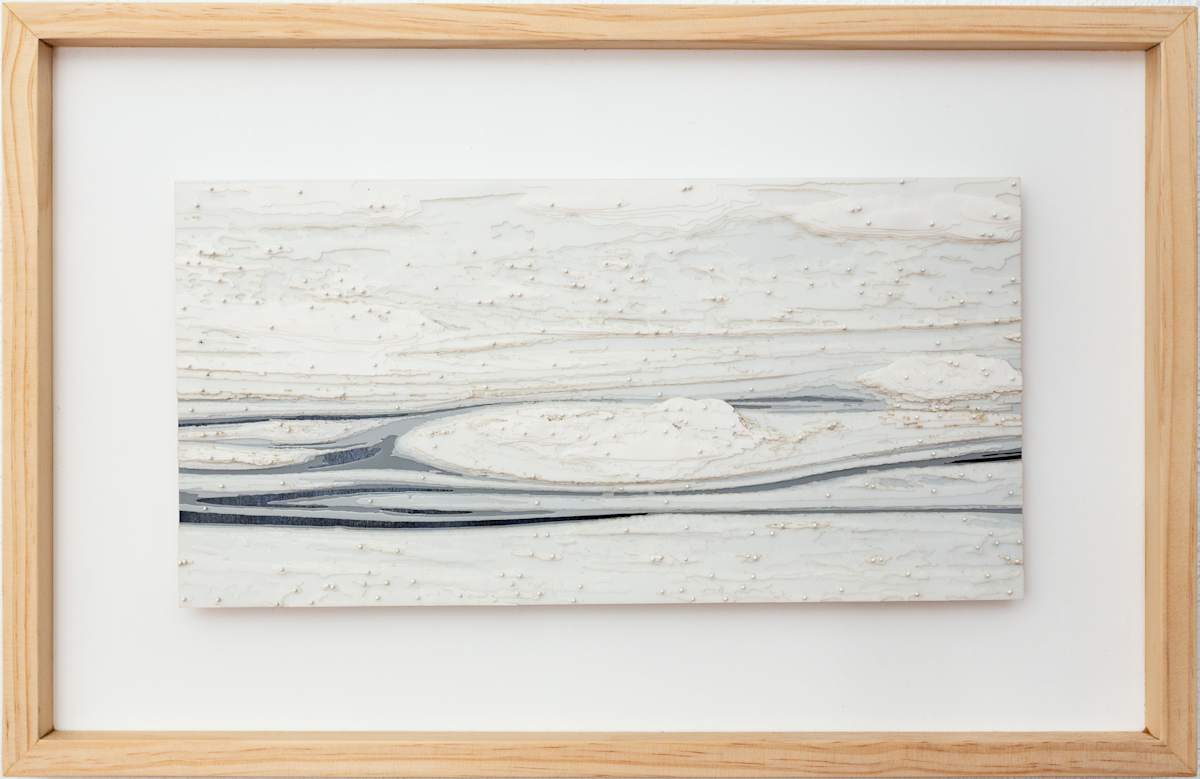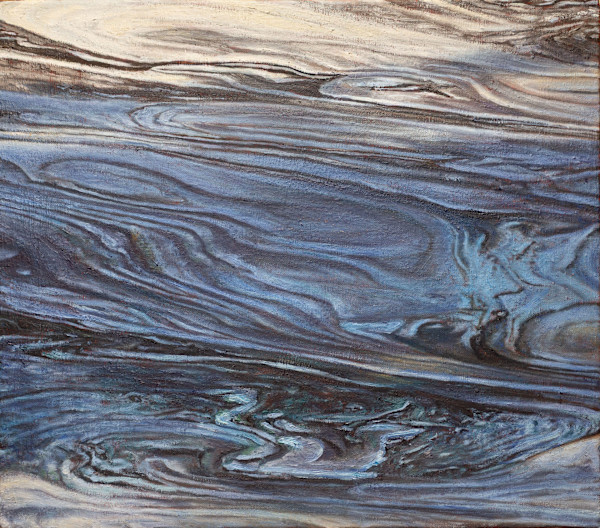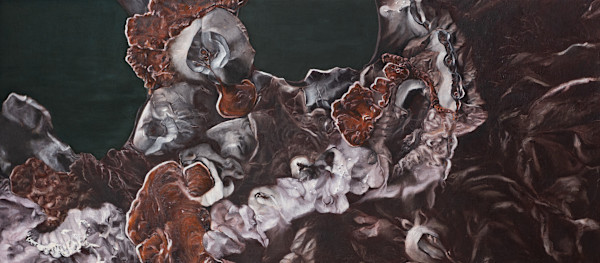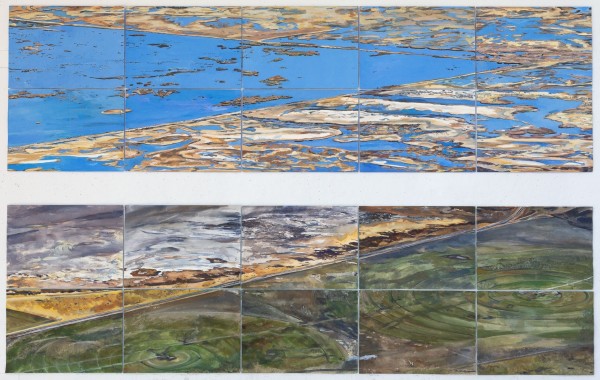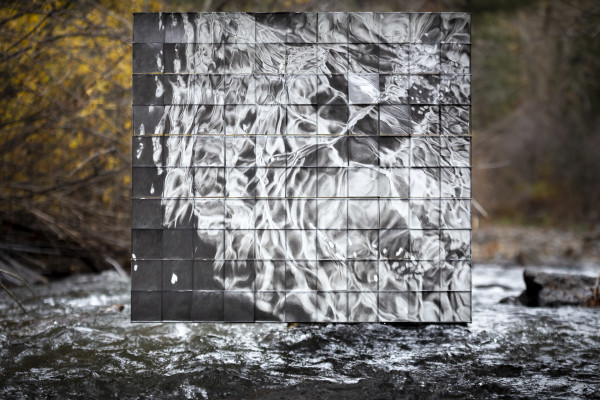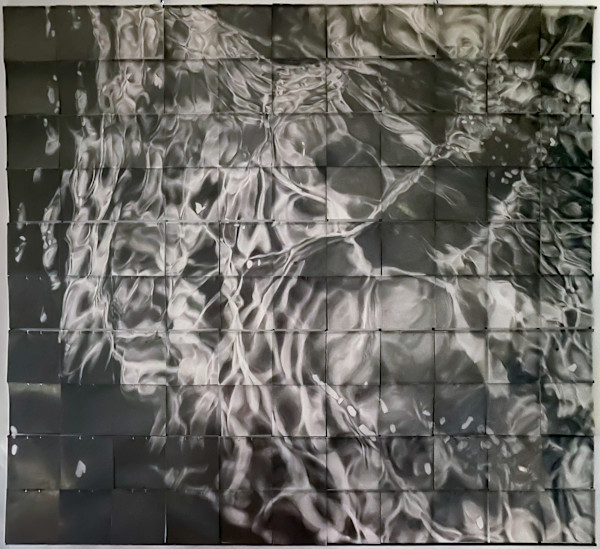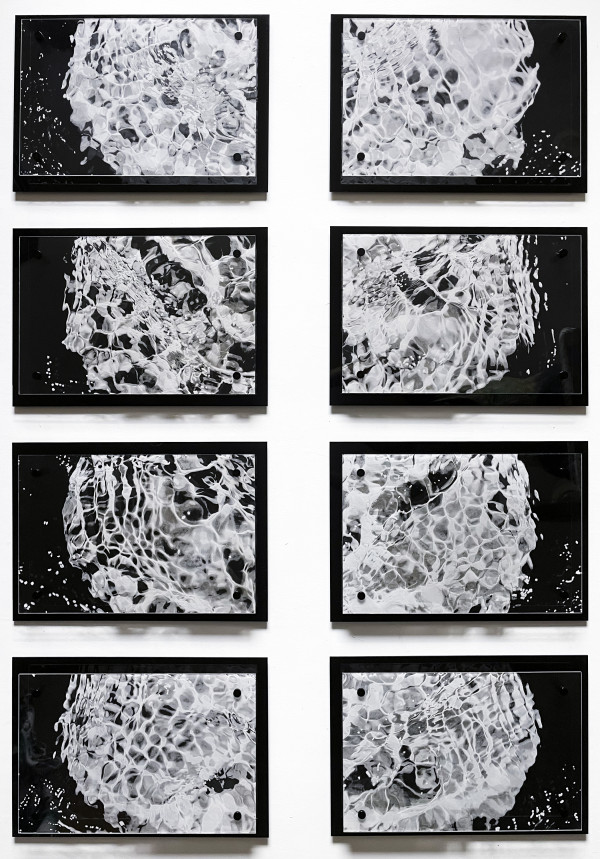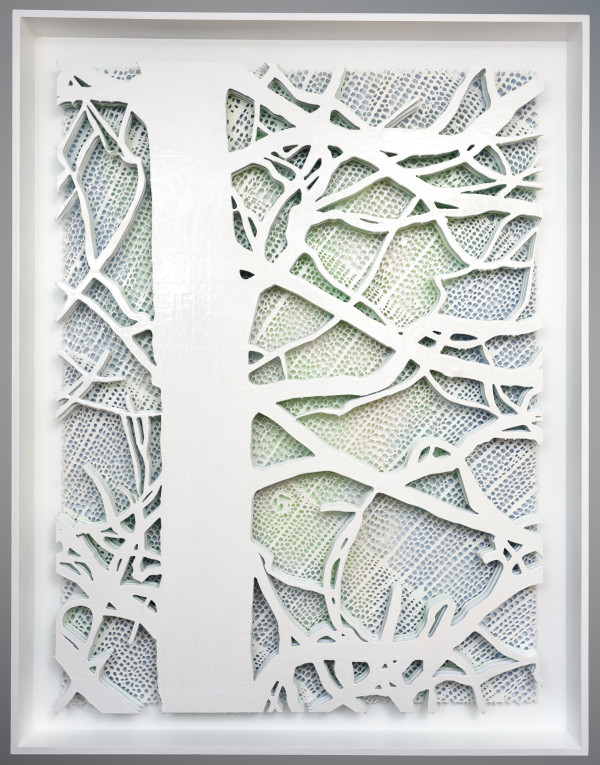Foam in a research site above the JC Boyle dam (recently removed) on the Klamath River covers the surface of the water. Foam swirls and builds into pillows as it follows the many currents in the eddy. I created low-relief compositions of the foam, like topographical maps by cutting and layering synthetic paper, and securing the layers with pins.
As a whitewater kayaker, we called the foam “eddy muffins.” Eddy muffins are a result of eutrophication which occurs in water with high nutrient levels. Scientists refer to the Klamath River as a productive river – a river that produces a large number of plants and algae. Eutrophication is naturally occurring, especially in productive rivers and warm shallow lakes like the Upper Klamath Lake, but it is also exacerbated by industrial wastewater and fertilizers and waste from farming and ranching practices. Eutrophication can severely decrease water oxygen levels, creating conditions that can kill fish and other aquatic animals.

